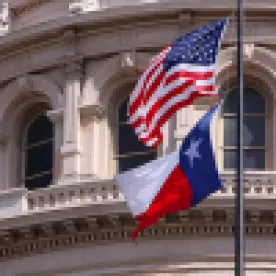The Texas Supreme Court recently ruled that a liability insurer's duty to indemnify its insured for settlements or judgments is determined by the evidence, not merely the pleadings, and may be invoked even when the duty to defend did not initially appear to attach. In short, the court recognized that there are instances when an insurer may have an obligation to indemnify an insured against a third-party claim even if the insurer were not initially ruled to have an obligation to defend. The Burlington Northern and Santa Fe Railway Company f/k/a The Atchinson, Topeka and Santa Fe Railway Company v. National Union Fire Insurance Company of Pittsburgh, Pa., No. 10-0064 (Tex. Feb. 25, 2011). This decision clarifies a previously ambiguous point of law in Texas, where insurers frequently argued-and some courts agreed-that "no duty to defend equals no duty to indemnify," regardless of extrinsic evidence.
Background
Standard-form liability insurance policies typically require an insurer both to defend the insured against a third-party claim and to indemnify the insured in the event of a settlement or judgment. These two fundamental duties are subject to different legal standards as to when and how they are triggered. There are also varying standards for these duties among jurisdictions. Under most jurisdictions' laws, the duty to defend is typically determined by comparing the allegations in the third-party claim (typically a complaint or petition) to the basic coverage provided by the insurance policy; if this comparison reveals at least a potential or possibility of coverage, then the insurer has an obligation to defend its insured, at least until the possibility of coverage has been conclusively negated. The duty to indemnify, however, is determined based on the actual facts and evidence. If the facts and evidence establish that there actually is coverage under the insurance policy, then the insurer must provide coverage.
In Burlington Northern, the allegations in the third-party claim revealed no apparent potential for coverage under the applicable policy. However, the actual facts developed in the course of the underlying litigation indicated that a potential for coverage did exist. The court then had to address the quixotic question: If the insurer initially appeared to have no duty to defend based on pleading allegations, did the insurer also, per se, have no duty to indemnify? In a well-reasoned decision, the Texas Supreme Court held that an insurer is not automatically relieved of its duty to indemnify.
The Texas Supreme Court Decision
Burlington Northern operated trains, and hired SSI Mobley (Mobley) to control vegetation along certain areas of Burlington Northern's rights-of-way under a contract with a term of "1994 through 1996." In August 1995, a Burlington Northern train collided with a car, killing the car's driver and one passenger. Survivors of the deceased filed suit, alleging in part that Mobley failed to use reasonable care to control weeds, and because of its improper timing and application of chemical weed control, there was excessive vegetation that caused the collision.
Burlington Northern tendered the claims to National Union, which had issued a policy to Mobley that also insured Burlington Northern. National Union denied coverage. Burlington Northern filed a declaratory judgment action, and after some procedural maneuvering, the trial court granted summary judgment in National Union's favor, holding that National Union had no duty to defend and therefore no duty to indemnify.
The trial court relied on an exclusion in the National Union policy for injury taking place away from Mobley's premises and arising out of Mobley's product or work. The exclusion contained a carve-out, however, for work that "has not yet been completed or abandoned." This meant that the policy did provide coverage for claims arising out of work that was not completed or was abandoned. The policy provided that Mobley's work would be "deemed completed" when, among other things, all of the work called for in the contract was completed, all of the work done at a site was completed, or part of the work at a site had been put to its intended use. The policy also stated that work that may need service, maintenance, or certain upkeep, but otherwise was complete, would be considered "completed." The third-party complaint alleged that Mobley's work took place in the past, thus apparently implicating the exclusion for work that had already been completed and negating National Union's duty to defend.
The issue addressed by the Texas Supreme Court arose from the fact that both the trial and appellate courts found that National Union did not have a duty to indemnify without considering any of the actual facts developed in the underlying third-party suits. In its ruling, the Texas Supreme Court noted that the duty to defend and the duty to indemnify "enjoy a degree of independence from each other." The duty to defend arises before litigation is completed; the duty to indemnify is determined "based on the facts actually established in the underlying suit." Because the contract between Burlington Northern and Mobley had a term that extended through 1996, it was possible that the facts in the underlying suit established that Mobley's vegetation control operations in fact were not "completed," but extended to 1996. It thus was error for the trial and appellate courts not to consider all evidence presented by the parties in determining National Union's coverage obligations.
Implications
The Texas Supreme Court's holding finding that an insurer is not automatically relieved of its duty to indemnify is a reminder to policyholders that claims for coverage can be pursued even if the insurer appears to have no duty to defend. As shown in Burlington Northern, there are instances when a complaint may negate a duty to defend, but the facts that develop during the underlying suit establish that coverage actually does exist under the relevant insurance policy. These facts should be tendered to the insurer for review and reconsideration of any denial of a defense and/or indemnification obligation. In the event of a disputed claim that arises in similar circumstances, it may be necessary to involve experienced coverage counsel to parse through these nuanced factors.




 />i
/>i
